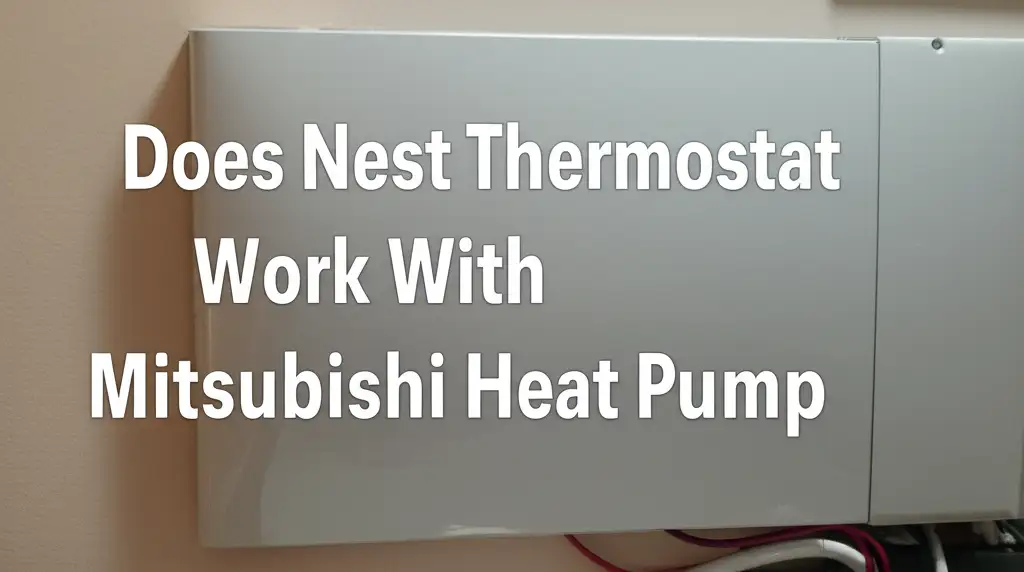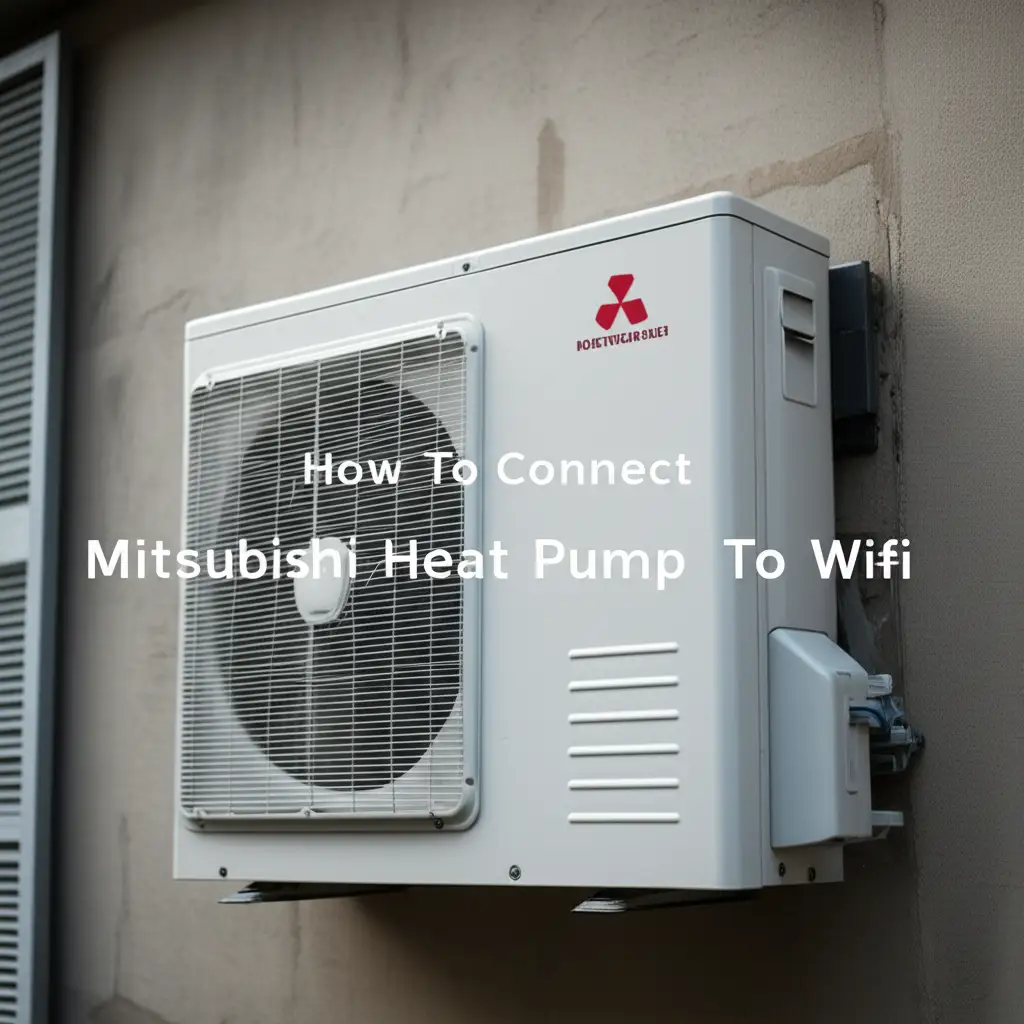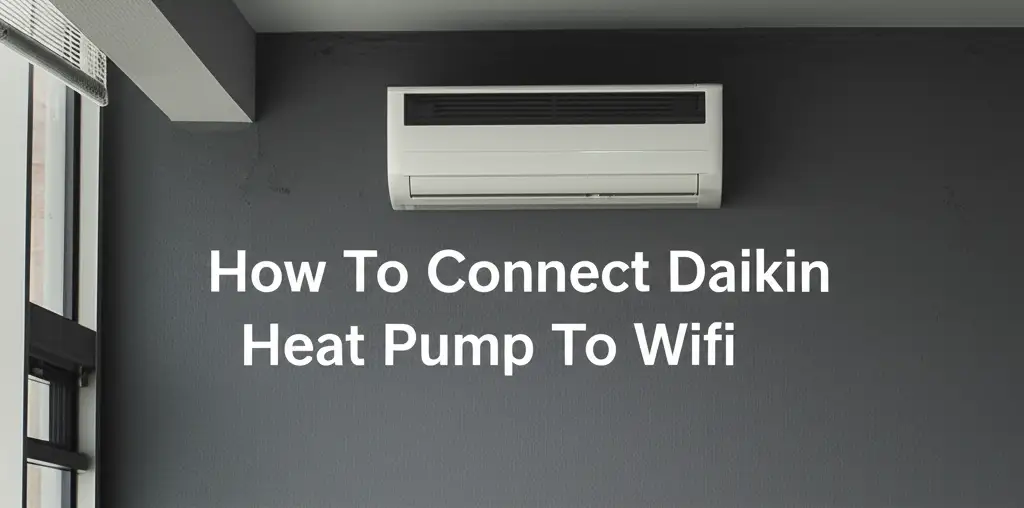· Todd Martin · Smart Home, HVAC, Heat Pumps, Thermostats · 16 min read
Does Nest Thermostat Work With Mitsubishi Heat Pump

Nest Thermostat with Mitsubishi Heat Pump: Does It Work?
Imagine controlling your home’s temperature with a simple voice command or a tap on your phone. Many homeowners dream of this convenience. You might already own a smart thermostat like the Nest, hoping to pair it with your efficient Mitsubishi heat pump. The big question is, does Nest Thermostat work with Mitsubishi Heat Pump systems directly? This is a common question, and the answer involves a few details.
I will guide you through the compatibility landscape between these two popular home devices. We will explore why direct connection is often tricky for certain Mitsubishi systems. We will also look at the solutions available. You can achieve smart control for your home comfort. Understanding the specific needs of your Mitsubishi unit is important. This article will help you decide the best path forward. I aim to provide clear, actionable insights for your smart home setup.
Takeaway
Connecting a Nest Thermostat to a Mitsubishi Heat Pump often requires specific steps. Here are the key points to remember:
- Direct Wiring: Most Mitsubishi ductless mini-split systems do not offer standard low-voltage thermostat terminals for direct Nest connection.
- Proprietary Control: Mitsubishi heat pumps use their own communication protocols, which Nest thermostats do not natively understand.
- Adapter Solutions: You will likely need a third-party interface or a Mitsubishi-specific adapter to bridge the communication gap.
- Professional Installation: Installing these adapters and integrating them correctly usually requires a certified HVAC technician.
- Benefits: With the right setup, you gain smart control, energy savings, and enhanced comfort from your Mitsubishi system.
Can a Nest Thermostat Connect to a Mitsubishi Heat Pump?
Yes, a Nest Thermostat can work with a Mitsubishi Heat Pump, but direct connection is rare for ductless mini-split systems. Most Mitsubishi mini-splits use proprietary communication that requires an adapter or interface. These devices translate signals between the Nest Thermostat and the Mitsubishi heat pump, allowing them to communicate effectively. For central ducted Mitsubishi systems, direct wiring is sometimes possible.
Understanding Nest Thermostat Compatibility
Nest thermostats are popular smart devices. They offer features like learning your schedule and saving energy. These thermostats are designed to work with traditional HVAC systems. This includes furnaces, air conditioners, and heat pumps that use standard low-voltage wiring.
A standard thermostat typically connects to your HVAC system with a few wires. These wires control different functions. For example, the “R” wire provides power. The “Y” wire controls cooling. The “W” wire controls heating. A “C” wire provides continuous power to the thermostat. Nest thermostats expect these standard connections. They are built around this common wiring scheme.
My experience tells me that most homes have this type of setup. This is why Nest is often a simple plug-and-play upgrade. However, heat pump systems can be more complex. They often have more wires or different control signals. This is especially true for advanced heat pump systems. Understanding these basics helps you see why issues might arise with some units. It is important to know the type of system you have.
Many Nest models are available. The Nest Learning Thermostat and Nest Thermostat E are common choices. Both models offer similar smart features. Their compatibility depends more on your HVAC system’s wiring. It is not about the specific Nest model itself. You need to check your system’s terminals. This ensures proper connection.
For heat pumps, Nest looks for specific wires. These include O/B for reversing valves and auxiliary heat wires. These wires control the heat pump’s specialized functions. If your heat pump uses these standard connections, Nest might work. If your system uses a different method, then direct compatibility is less likely.
Cleaning your thermostat is a good practice for any system. It helps maintain performance. A clean thermostat can read temperatures more accurately. This ensures your smart features work their best. Understanding how your heat pump’s fan operates is also useful. For instance, does the heat pump fan run when heat is on? This type of knowledge helps you troubleshoot small issues.
The Specifics of Mitsubishi Heat Pump Systems
Mitsubishi Electric is a leading manufacturer of heat pumps. Their systems are known for efficiency and quiet operation. However, many Mitsubishi heat pumps, especially their mini-split and multi-zone ductless units, use a unique communication method. This method is called M-Net or another proprietary protocol.
These systems do not use standard low-voltage thermostat wiring. Instead, they communicate digitally between the indoor unit and the outdoor unit. This digital communication is handled by the system’s own controller. This is usually a handheld remote or a wall-mounted controller. These controllers send specific commands. They do not send simple on/off signals. This setup makes direct wiring with a Nest Thermostat difficult.
Central ducted Mitsubishi heat pump systems can sometimes be different. These systems might have traditional thermostat terminals. If your Mitsubishi system uses a conventional furnace or air handler, direct wiring might be possible. You should always check your specific model’s wiring diagram. This helps confirm the compatibility. Most homeowners with ductless systems will face challenges.
Mitsubishi offers its own smart home solution. It is called Kumo Cloud. Kumo Cloud allows you to control your Mitsubishi heat pump from your phone. It provides scheduling and remote access. This system uses Mitsubishi’s proprietary communication. It is a seamless way to manage your specific unit. It is an alternative if a Nest integration is too complex. You can definitely control your Mitsubishi heat pump with your phone using Kumo Cloud.
Sometimes, your Mitsubishi heat pump remote may not work. Troubleshooting why your Mitsubishi heat pump remote is not working is a common issue. You might also wonder how to turn on your Mitsubishi heat pump without the remote. These issues highlight the reliance on Mitsubishi’s specific control methods. This reliance is why third-party thermostats like Nest face compatibility hurdles. My own experience has shown this to be a primary challenge.
Direct Wiring Challenges: Why It’s Not Always Simple
You might think connecting a Nest Thermostat to any HVAC system is easy. For many Mitsubishi heat pump systems, this is not the case. The core issue lies in the communication method. Standard thermostats use a simple electrical current to send commands. They turn components on or off. They control fan speeds or heating stages.
Mitsubishi ductless mini-split systems operate differently. They use a closed-loop digital communication system. This system sends complex data packets between the indoor and outdoor units. It also sends data to the remote control. These data packets include specific fan speeds, louvre positions, and advanced operational modes. A Nest Thermostat does not understand this digital language. It simply sends voltage signals. This is like trying to speak English to someone who only understands Japanese.
Mitsubishi indoor units typically do not have standard low-voltage thermostat terminals. You will not find the common R, G, Y, W, C terminals. Instead, they have terminals for power and communication wires. These wires connect directly to the outdoor unit. This design prevents a simple wiring swap. It makes direct Nest connection impossible without an intermediary device.
Attempting to directly wire a Nest Thermostat to a Mitsubishi mini-split can cause damage. You might short-circuit the system. You could also fry internal components. This is why I strongly advise against direct wiring without a proper adapter. Always consult a professional. They can confirm your specific unit’s wiring needs. They ensure safety.
Sometimes, your Mitsubishi heat pump might turn off unexpectedly. Why your Mitsubishi heat pump keeps turning off can be due to various reasons. These reasons include power issues or internal faults. It is often unrelated to thermostat compatibility. Another common issue is the unit blowing cold air. Why your Mitsubishi heat pump blows cold air could indicate a defrost cycle. It might also signal a refrigerant leak. These operational quirks highlight the system’s complexity. A standard thermostat cannot diagnose these issues.
Bridging the Gap: Adapter Solutions for Nest and Mitsubishi
Since direct wiring is usually not an option for Mitsubishi mini-split heat pumps, you need a bridge. This bridge comes in the form of an adapter or interface. These devices act as translators. They convert the Nest’s standard thermostat signals into the proprietary digital commands that your Mitsubishi heat pump understands.
Several companies offer such solutions. Mitsubishi Electric itself provides an interface. The PAC-US444CN-1 (or similar models) is a common choice. This Mitsubishi-specific adapter connects to your indoor unit. It then provides standard thermostat terminals (R, C, Y, W, G) for a Nest thermostat. This is often the most reliable solution. It ensures full compatibility and retains advanced system features.
Third-party smart AC controllers also exist. Brands like Cielo Breeze, Mysa, and Sensibo offer universal smart controllers. These devices often connect via infrared (IR) signals. They mimic your Mitsubishi remote control. They can learn your remote’s commands. Then, they send them over Wi-Fi. You can control your heat pump from an app. Some of these controllers can integrate with Nest or other smart home ecosystems. They provide a smart interface.
The setup process for these adapters varies. For the Mitsubishi PAC interface, an HVAC technician usually installs it. They connect it inside your indoor unit. Then, they wire the Nest thermostat to the interface’s terminals. For IR-based controllers, you simply place the device in the room. It needs a clear line of sight to the indoor unit. Then, you configure it through its app.
Using an adapter or interface brings many benefits. You gain the smart features of Nest. These include learning capabilities, remote control, and energy reports. You can schedule your heating and cooling more precisely. This leads to better comfort and potential energy savings. Adapters also help maintain your heat pump’s efficiency. They ensure it operates within its design parameters.
You might be interested in how different heat pumps work. For example, how an air source heat pump works in cold weather shows their capability in various climates. My own research indicates that while adapter solutions add a layer of complexity, they unlock the full potential of a smart home ecosystem. They allow you to integrate your heat pump with other smart devices.
Installation Considerations and Professional Help
Installing a Nest Thermostat with a Mitsubishi Heat Pump, especially using an adapter, is not always a DIY project. The process can involve specific wiring and configuration steps. These steps require a good understanding of HVAC systems. They also need knowledge of electrical connections.
For Mitsubishi’s official PAC interface, professional installation is strongly recommended. These interfaces connect directly to the internal wiring of your indoor unit. Incorrect wiring can damage your heat pump. It can also void your warranty. A certified HVAC technician understands these complex systems. They can ensure proper installation. They also configure the settings for optimal performance.
I always advise homeowners to prioritize safety. Dealing with electrical wiring carries risks. If you are not comfortable with wiring diagrams, hire a professional. An HVAC technician can confirm compatibility before you buy components. They can also troubleshoot any issues that arise during installation. They ensure your system works efficiently.
Before you even start, check your Mitsubishi heat pump’s model number. Look up its compatibility with specific adapters. Mitsubishi’s documentation can provide this information. Some adapters are model-specific. Others are more universal. Knowing your system’s details helps you choose the right adapter. This minimizes surprises.
Sometimes, heat pumps can cycle on and off frequently. Why your heat pump keeps turning on and off could be due to a short cycle. It might also be a miscalibrated thermostat or system issue. A professional installer can diagnose and fix such problems during the installation process. They ensure your new smart thermostat setup works smoothly with your existing system.
My personal experience shows that a smooth installation means hiring the right expert. They provide peace of mind. They ensure your smart home investment pays off. It is an investment in comfort and efficiency. So, make sure you choose a professional with experience in heat pump systems.
Benefits of Smart Thermostat Integration
Integrating a Nest Thermostat with your Mitsubishi Heat Pump, even through an adapter, offers significant benefits. The primary advantage is enhanced control. You gain the ability to manage your home’s temperature remotely. This is possible from your smartphone or tablet. This means you can adjust settings even when you are away from home. I find this incredibly convenient.
Key benefits include:
- Energy Savings: Nest thermostats are designed to save energy. They learn your preferences over time. They create schedules automatically. Features like Home/Away Assist detect when you leave and adjust the temperature. This prevents heating or cooling an empty house. This can lead to noticeable reductions in your energy bills. This helps you save money.
- Enhanced Comfort: You can achieve more precise temperature control. Nest thermostats maintain temperatures more consistently than manual controls. You can also create custom schedules. These schedules match your daily routine. This ensures your home is always comfortable when you are there.
- Remote Access and Control: Manage your climate from anywhere. Whether you are at work or on vacation, you can monitor and adjust your heat pump. This is especially useful if your plans change. You can pre-cool your home before returning.
- Smart Home Integration: Nest thermostats integrate well with other smart home devices. These include Google Assistant, Amazon Alexa, and various smart lighting systems. This allows for unified control of your home’s environment. You can create routines for different scenarios.
- Energy Reports and Insights: Nest provides detailed energy usage reports. These reports help you understand how much energy your heat pump uses. They identify patterns and suggest ways to save more. This data empowers you to make smarter choices. It helps optimize your energy consumption.
Understanding how different heat pumps work can also highlight efficiency. For example, how does an air source heat pump work in winter demonstrates their cold-weather capabilities. The more you know about your system, the better you can use smart controls. These controls maximize comfort and savings.
Alternative Smart Control Options for Mitsubishi Heat Pumps
While Nest integration with an adapter is a viable path, other smart control options exist for Mitsubishi heat pumps. It is worth exploring these alternatives. They might offer a more direct or simpler solution for your specific needs.
Mitsubishi Kumo Cloud: Mitsubishi Electric offers its own robust smart control system. It is called Kumo Cloud. This system is designed specifically for Mitsubishi heat pump units. It connects directly to your indoor units via a Kumo Cloud adapter. These adapters are installed internally. Kumo Cloud provides full control through a dedicated mobile app. This includes scheduling, zone control, and energy monitoring. It uses Mitsubishi’s native communication protocol. This ensures seamless operation. Many users find Kumo Cloud to be the most reliable and feature-rich option for Mitsubishi systems. It is built for their specific products. Controlling your Mitsubishi heat pump with your phone is very easy with Kumo Cloud.
Universal Smart AC Controllers: Several third-party companies offer universal smart AC controllers. These devices, like Sensibo Sky, Ambi Climate, or Tado Smart AC Control, are often IR-based. They mimic your original Mitsubishi remote control signals. You place them in the room with the indoor unit. They connect to your Wi-Fi. You control your heat pump through their app. Many of these controllers also offer smart features. These include scheduling, geofencing, and integration with voice assistants. They are typically easier to install than wired adapters. They do not require professional wiring. However, they may not offer the same deep integration as wired adapters or Kumo Cloud. They rely on line-of-sight for commands.
Home Automation Hubs: Some advanced home automation hubs can integrate with Mitsubishi systems indirectly. This integration might be through a compatible adapter or a universal IR blaster. For example, if you have a Samsung SmartThings hub, it might connect to a compatible IR device. This device then controls your heat pump. This option is for users with existing smart home ecosystems. It adds another layer of complexity.
Choosing the best option depends on your priorities. If you want deep integration and full features, Mitsubishi’s own adapter or Kumo Cloud might be best. If you prefer a simpler, app-based control, a universal smart AC controller could work. Consider ease of installation, desired features, and budget. My suggestion is to research each option. This helps you find the right fit for your home.
Frequently Asked Questions
Q1: Can I directly wire a Nest to my Mitsubishi mini-split?
No, direct wiring is usually not possible for Mitsubishi ductless mini-split systems. These systems use proprietary digital communication protocols, not standard low-voltage thermostat wiring. Attempting a direct connection without a proper interface can damage your heat pump and void its warranty. Always use a compatible adapter.
Q2: What is an interface or adapter for a Mitsubishi heat pump?
An interface or adapter is a device that translates communication signals. It converts the standard electrical signals from a Nest Thermostat into the specific digital commands your Mitsubishi heat pump understands. This allows the Nest to control the Mitsubishi system. Mitsubishi offers its own interfaces, and some third-party solutions exist.
Q3: Is Kumo Cloud a good alternative to Nest for Mitsubishi?
Yes, Mitsubishi’s Kumo Cloud is an excellent alternative. It is their proprietary smart control solution. Kumo Cloud provides seamless integration and full control of your Mitsubishi heat pump from your smartphone. It is designed specifically for Mitsubishi systems. It often offers more in-depth control features than a general smart thermostat with an adapter.
Q4: Will a Nest Thermostat save me money with my Mitsubishi heat pump?
Yes, a Nest Thermostat can help you save money with your Mitsubishi heat pump when properly integrated. Its smart features, like learning your schedule, Home/Away Assist, and energy reports, optimize heating and cooling. This reduces wasted energy. These features lead to lower utility bills and improved energy efficiency over time.
Q5: What should I do if my Nest Thermostat does not work with my Mitsubishi system?
If your Nest Thermostat does not work, first confirm your Mitsubishi heat pump model. Check if you have the correct adapter. Ensure the adapter is properly installed and configured. If problems persist, consult a certified HVAC technician. They can diagnose wiring issues or system incompatibilities. They can also recommend the best solution.
Q6: Do all Mitsubishi heat pumps require an adapter for Nest?
Not all Mitsubishi heat pumps require an adapter. Most ductless mini-split and multi-zone systems do. These systems use proprietary communication. However, some central ducted Mitsubishi heat pump systems might have standard low-voltage thermostat terminals. These systems could potentially work with a Nest Thermostat directly. Always check your specific model’s manual.
Conclusion
Connecting a Nest Thermostat to your Mitsubishi Heat Pump is a goal many homeowners share. While it is not always a direct plug-and-play solution, especially for ductless mini-split systems, it is certainly achievable. The key often lies in using the right adapter or interface. These devices bridge the communication gap, allowing your smart Nest Thermostat to communicate effectively with your efficient Mitsubishi system.
I have learned that understanding your specific Mitsubishi model is the first step. This helps you choose the correct integration method. Investing in a professional installation ensures safety and proper functionality. Once connected, you can unlock the full potential of smart home climate control. This includes enhanced comfort, significant energy savings through intelligent scheduling, and convenient remote access. Ultimately, the integration of a Nest Thermostat with your Mitsubishi Heat Pump creates a smarter, more efficient, and more comfortable living environment for you. Explore your options, consult professionals, and enjoy the benefits of a connected home.
- Nest Thermostat
- Mitsubishi Heat Pump
- Smart Thermostat
- HVAC Compatibility
- Home Automation
- Energy Efficiency
- Mini-Split





